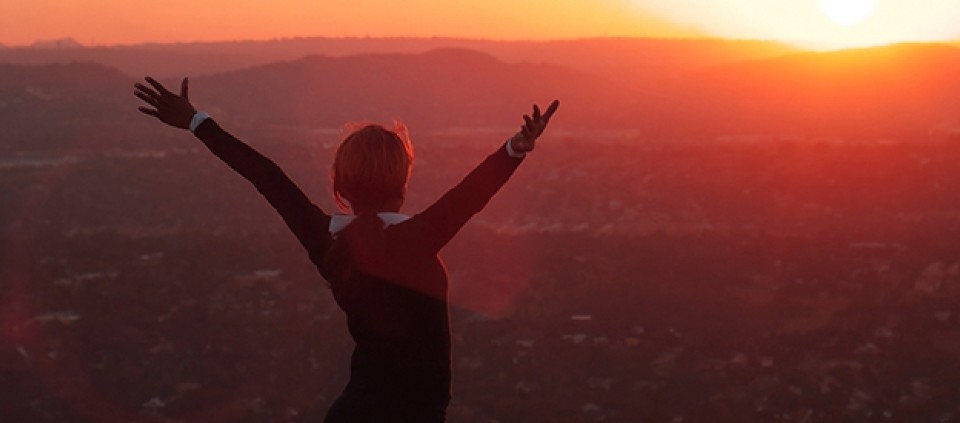Befriending Your Resistance

Several years ago, I was invited to be a writer and facilitator on a wonderful project. On the morning it began, I found myself dawdling and stalling on my way out the door for the 9:00 am meeting. Once in the car, I encountered rush hour traffic and arrived 15 minutes late. The other staff members, who’d traveled hundreds of miles to be there, were on time and waiting for me, the person who lived two miles away.
It was a cringe-worthy moment, and I blame my resistance.
Resistance is a force, as natural as gravity, that shows up whenever we try to grow or change. Sometimes it’s quietly discomforting and sometimes it’s deafeningly loud. It’s rooted in fear and a desire to remain safe in our comfort zones, where very little growth or change happens.
“Resistance by definition is self-sabotage,” writes Steven Pressfield, author of The War of Art: Break Through the Blocks and Win Your Inner Creative Battles. “Resistance obstructs movement only from a lower sphere to a higher. It kicks in when we seek to pursue a calling in the arts, launch an innovative enterprise, or evolve to a high station morally, ethically, or spiritually.”
As a teacher and coach of personal transformation, I see resistance in my students and clients all the time. It’s woven into the list of excuses they come up with for why they didn’t, or can’t, follow through with a plan to make progress on a goal. It shows up as lateness, crisis, procrastination, sudden doubt, discouragement (“Why bother?”), and even sickness and injury. However the forms differ, they have the same effect: keeping us stuck.
While I still encounter my own resistance, I’ve gotten much better at recognizing and working with it. Kind of like, “Well, hello there! I was expecting you. Thanks for sharing, but we’re gonna move forward anyway.”
Megan McDonough, a yoga teacher and faculty member for Kripalu’s Certificate in Positive Psychology (CiPP) program, notes that the same phenomenon occurs when we encounter our “edge” when practicing on the yoga mat.
“Stretching into life gives the same edge, only we call it resistance,” Megan says. “By calling on your unique strengths, looking at what works, and recognizing the resistance for what it is, you can continue taking forward action with the same deliberate attention you give to a challenging yoga posture.”
CiPP Course Director Maria Sirois says that we can also seek to understand what our resistance is trying to protect us from, and see if we need to challenge any false assumptions.
"For example, I may want to be a calmer person, yet underneath that desire is a competing assumption that my anxiety actually protects me from harm by keeping me on constant alert,” says Maria. “Letting go of anxiety means letting go of the notion that I can control the world. And this doesn't happen all at once, but in small increments of change.”
In my experience, resistance is overcome by action—baby steps in particular. We can sneak around the part of us that’s frightened of change by taking small steps, known in Japanese culture as kaizen, or continuous improvement. Such small changes are easier to make, maintain, and build upon, which leads to new habits and developments before resistance can take hold.
In my recent quest to exercise more, I got around my resistance by arranging errands in a part of town that I could walk to. Since I had to return library books and make a bank deposit, why not put on my sneakers and hoof it over there? Eventually, I stopped needing the errands because my body craved the exercise and it became a habit.
On the occasional lazy day, resisting my resistance is easier because I look forward to the buzz I get from my brisk walks.
Kelly McGonigal, author of The Willpower Instinct, says that linking dreaded tasks to things that bring us pleasure is a good strategy for overcoming resistance. In the book, Kelly writes about a woman who tackled the long avoided de-cluttering of her spare room with the help of Christmas tunes and scented candles. One of my clients recently got through a mound of paperwork by promising herself dinner and a movie afterwards. It also helped that she’d promised to e-mail me when the deed was done, adding a dose of accountability.
Others find success with the “Five Minute Takeoff,” a resistance-busting strategy that involves setting a timer for five minutes and boldly diving into that overstuffed closet, pile of mail. or languishing project with permission to stop when the timer goes off. It breaks inertia, assuages overwhelm, and often gets the job done in less time than we thought possible.
Whatever strategy I use for overcoming resistance, understanding that it’s an inevitable part of growth helps me to have compassion for the part of me that’s threatened, and then move forward anyway. Self-compassion coupled with action is a powerful combination for getting things done.
Kim Childs is a Boston-based life and career coach and writer who specializes in Positive Psychology, She is also a Kripalu Yoga teacher and facilitator of workshops based on The Artist's Way: A Spiritual Path to Higher Creativity, by Julia Cameron.
© Kripalu Center for Yoga & Health. All rights reserved. To request permission to reprint, please e-mail editor@kripalu.org.
Kim Childs is a Boston-area life and career coach specializing in Positive Psychology, creativity, and spiritual living. She writes for Kripalu.
Full Bio and Programs